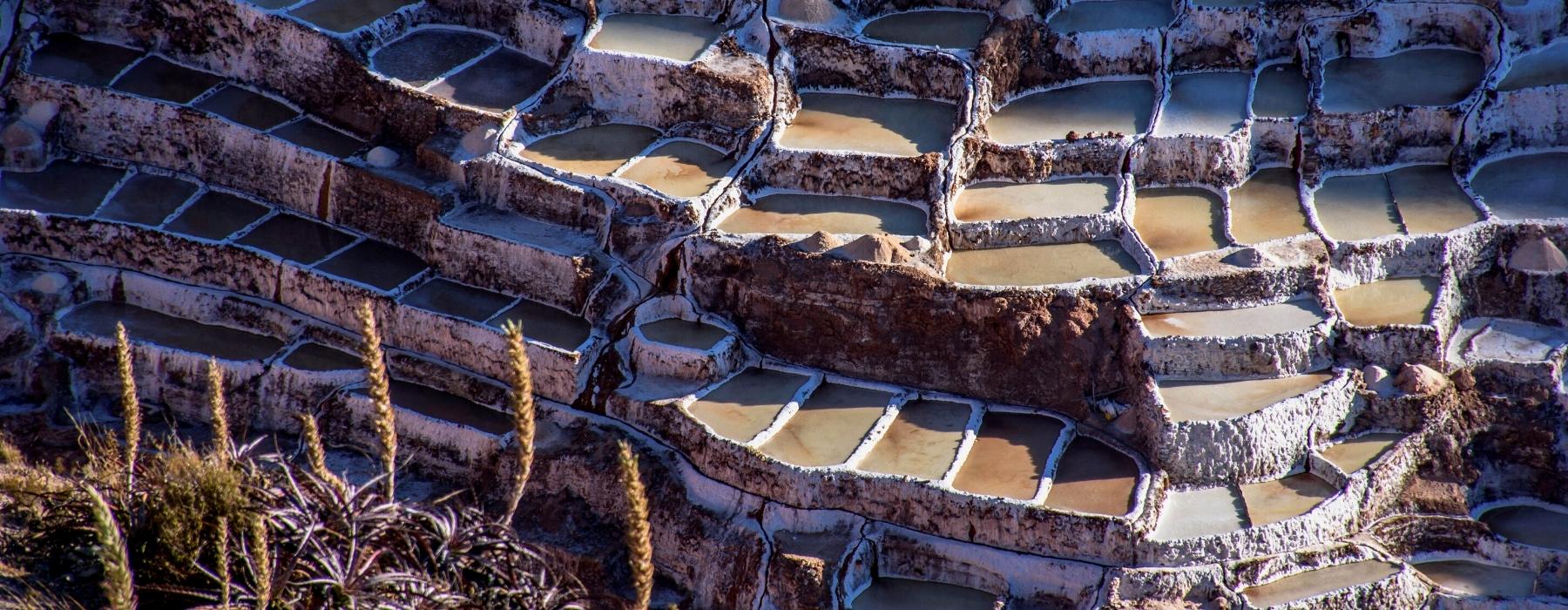
The Salt mines of Maras are located 50 km northeast of the city of Cusco, at an altitude of 3,200 meters above sea level. Geographically, they are located in the lower part of the sub-basin and left bank of the Salineras stream, towards its mouth in the Vilcanota river, in the jurisdiction of the peasant communities of Maras and Pichingoto, between the ravines of the Qaqahuiñay, Cruz Mocco, Llully Mocco and Chupayoq.
It has three access routes: from the town of San Francisco de Maras, along the bridle path or runañan to the salt mines of Maras, the paved road from the town of San Francisco de Maras, and crossing the Inca bridge of Tarabamba through the community of Pichingoto.
The salt mines of Maras themselves are made up of a set of approximately 4,500 salt pools located in the form of stepped terraces on the middle slope of the Qaqawiñay hill with slopes of 20 degrees incline to the bottom of the ravine on the left bank of the Salineras stream, with dimensions that fluctuate around 5 linear meters, occupying a total area of approximately 1.5 to 2 hectares.
The terraces are made up of irregular stone retaining walls settled with mud mortar, forming dikes that delimit the pools as small reservoirs of approximately 5m2. The saltwater conduction system from its catchment is carried out through a main irrigation channel, which branches into several small channels that feed the pools. The conduction and maintenance of the salt water canal is associated with a path that, due to its layout and characteristics, is presumed to be of pre-Hispanic origin. This technology is similar to that of irrigation in pre-Hispanic agricultural platforms characterized by the conduction and equitable distribution of water.


Legend has it that the salty waters that flow from the mountain are the tears of Ayar Cachi. Within the Inca mythology, this was one of the 4 brothers and sisters that originated the great empire of the Incas: The God Wiracocha made these brothers come out of a cave to found a great empire. Ayar Cachi threw a stone at a mountain, forming a ravine. Then his brothers, fearing his strength and power, tricked him into the cave, preventing him from being the founder of the empire. The tears of this character formed the pools that the sun then dried up, forming the salt flats.
The set of pools and channels is in perfect continuous operation from the pre-Inca period to the present. The very particular effect of great landscape value produced by the set of staggered pools that are perceived as the sum of numerous white, cream or brown grids, arranged in a certain order following the topography of a slope of the Qaqawiñay hill, most of which which looks flooded with water and others dry with salt on their surface, highlighting the particular configuration of the complex and the chromatic contrast with the natural environment provided with low shrubby vegetation.
Salt production takes place once a month and is marked by the calendar of the seasons of the year. Thus, in the dry season (May to October) the accumulation of salt is rapid, there is greater production and better quality salt of “white or pink color that commercially characterizes this salt” is obtained, on the other hand in the rainy season (November to April) production is difficult and the color of the salt shows brown in various shades.
The traditional production process is strictly communal without any external participation and consists of filling the pools, previously cleaned, with salt water from a Salineras stream spring conducted by a system of canals, up to a height of 5 centimeters and then allowing it to evaporate. for 3 days, repeating this practice for a month, mainly during the dry season, a period in which a solid volume of crystallized salt of 7 to 10 centimeters is reached, equivalent to 3 or 4 inches in height. The extraction of the salt is carried out in layers, obtaining different commercial qualities.
The extraction process or “harvest” includes the fragmentation of the salt using the force of the feet and then proceeding to scrape each layer with a wooden tablet or a small pick and then sift with a sieve and stack what is obtained to one side. Once the salt is completely dry, it is collected in a basket or container for its transfer to the warehouse of the Marasal communal company, which is in charge of the classification and commercialization. The profits from the sales are distributed among the owners according to the number of pools they have. Each pool produces between 150 and 200 kilos of salt on average per month.
In the process of extraction and elaboration of salt, traditional community-type social relations predominate, currently maintaining its traditional form. The salt production system is inherited from father to son, as witnessed today by many elderly community members, who work their wells since they were children, just as their parents, grandparents and ancestors did. The community members of Maras and Pichingoto establish production agreements with the community members who do not have salt pools or with those who have few units; This is how the owners cede their wells to the non-possessors in a condition of cooperation and reciprocity or ayni, and the result of the production is distributed in a proportion of 5 to 1 in favor of the community owner.
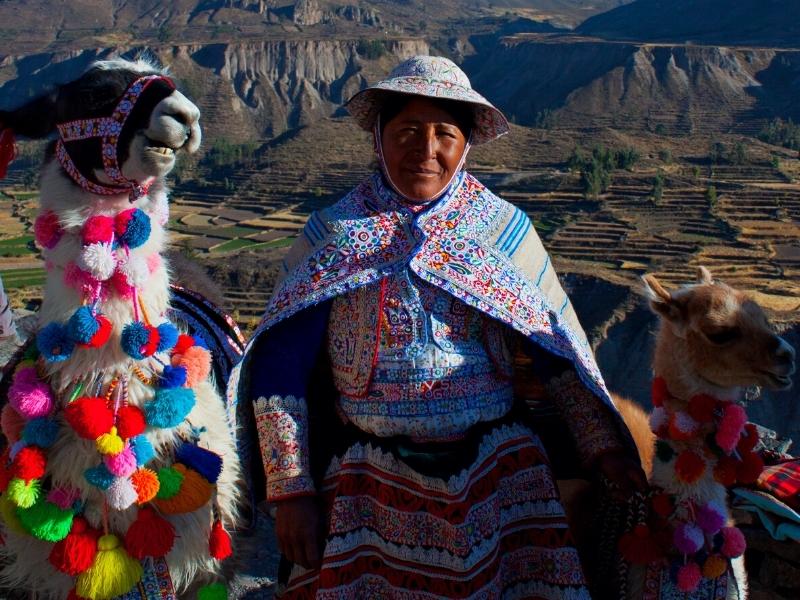
Feel the magic and the energy of Cusco and Machu Picchu, then continue to where the legend began – Lake Titicaca, to get off the beaten path and immerse yourself in the local culture and enjoy the peace and tranquility on the shores of the Lake.

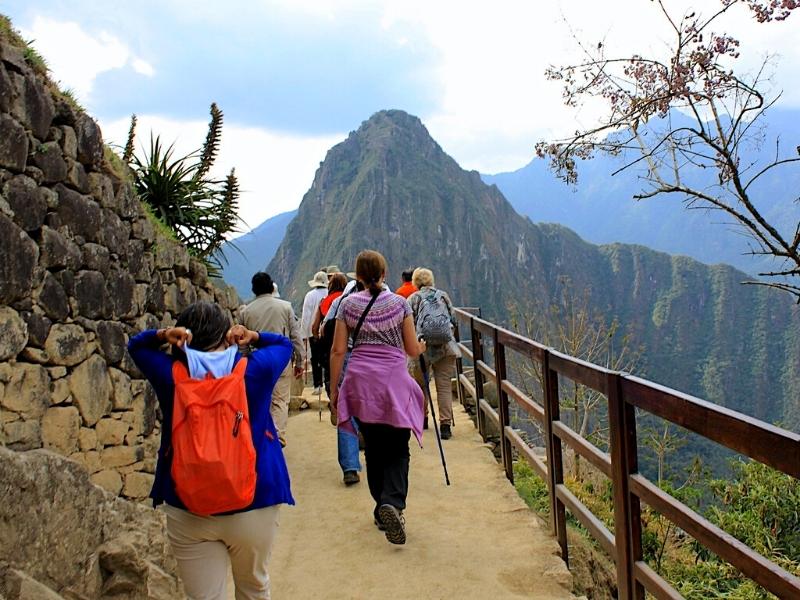
Get to know the majestic city of Cusco, cradle of the greatest civilization in South America, the Incas and their great works of engineering, the citadel of Machu Picchu by train.


Enjoy an incredible vacation, in the heart of the Inca empire, Cusco, our travel program will take you to the most famous tourist attractions of Cusco, such as the Sacred Valley of the Incas, Machu Picchu, in very cozy hotels.

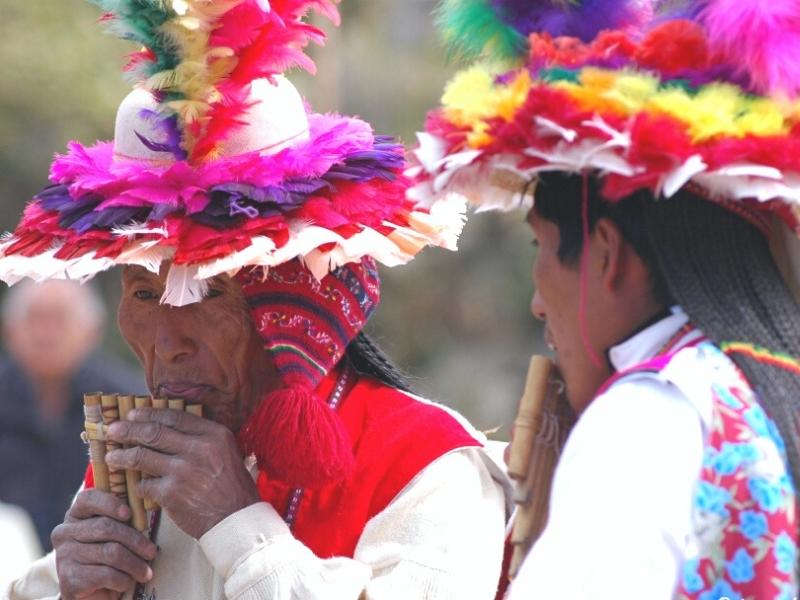
Sublime landscapes, wildlife, history, culture - Peru has more than its fair share. Its famed snow-capped Andean peaks shelter the temples and fortresses of the Inca and other pre-Columbian cultures, linked by a network of paved trails.

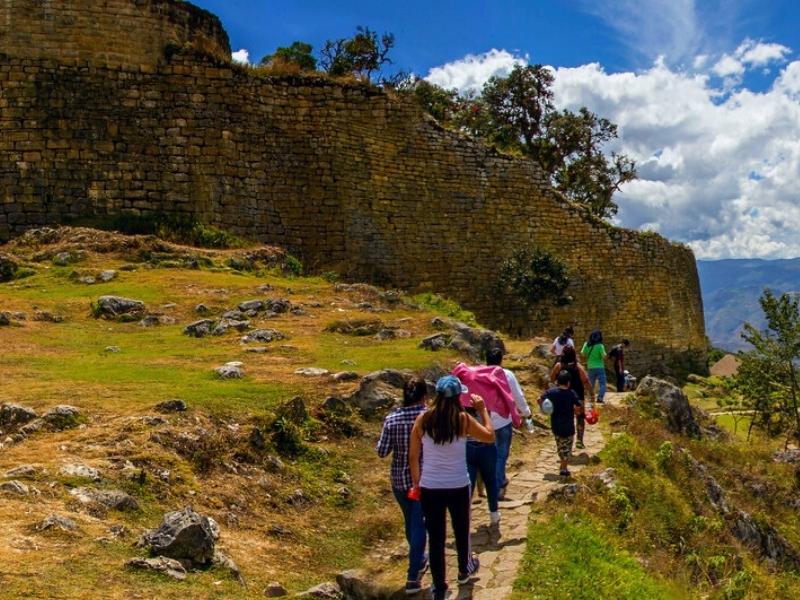
Visit Peru with your family or friends, and enjoy the best natural and cultural wonders. In this tour you will discover the best of northern Peru, where is one of the highest waterfalls in South America, the fortress of Kuelap, and the short route to Machu Picchu through an Inca trail, enjoying the empire of the Incas in all its greatness.


See Peru in comfort and style with Andean Great Treks. We’ll create a personalized Peru tour just for you, with the perfect mix of locations and activities. Discover the ancient Incan citadel of Machu Picchu with an expert private guide. Enjoy the epic scenery of the Sacred Valley of the Incas and the rich history of Cusco. Explore the wonders of the great green Amazon.

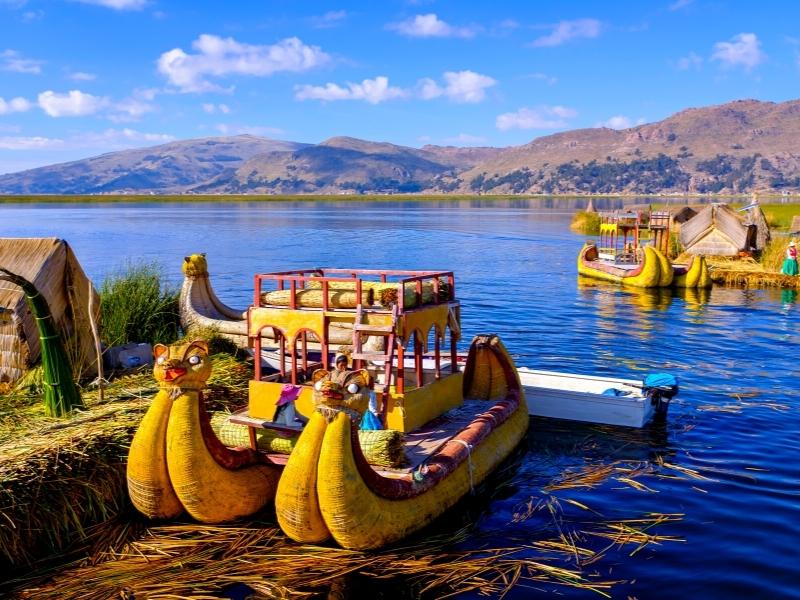
The wonders of Peru await you as you hike through the Manu Amazon rainforest, traverse the plains of the Sacred Valley of the Incas, and stroll the cobbled streets of Cusco on this 15-day trip from Lima. Search for monkeys and medicinal plants in the Amazon, travel the ancient road to Machu Picchu, experience a stay in a traditional community on the shores of serene Lake Titicaca.


The top sights of Peru will leave all the family thrilled by the scenic grandeur, ruined temples, colonial cities, amazing inca trail to Machu Picchu, the Inca Lost City, once buried under the tropical forest which surrounds it.

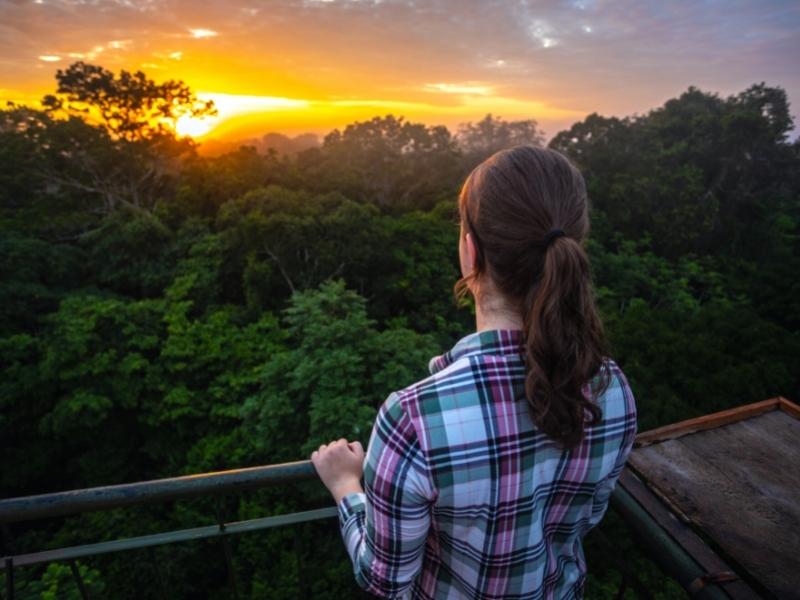
Dive deep into the culture and landscapes of Peru with this adventure to Machu Picchu, the Amazon and more. Search for wildlife along jungle trails and rivers in the rainforest from a comfortable lodge then head up into the Andes to Cusco, the capital of the Inca empire.


Peru is a multicultural country, and megadiverse, because it has different ecological floors, which have special microclimates, where ancient civilizations dominated the cold landscape of the Andes, and the hot coasts of the Pacific. It is also part of the great Amazon forest where a great variety of unique animals and plants coexist. This tour will take you to the most impressive landscapes in South America.


Enjoy the best vacations in Peru. Our Majestic Peru travel program will take you from the coast and its impressive Nazca lines, to the lodge in the Amazon forest surrounded by many wild fauna, you will travel the Inca trail to Machu Picchu, culminating your trip in Cusco.

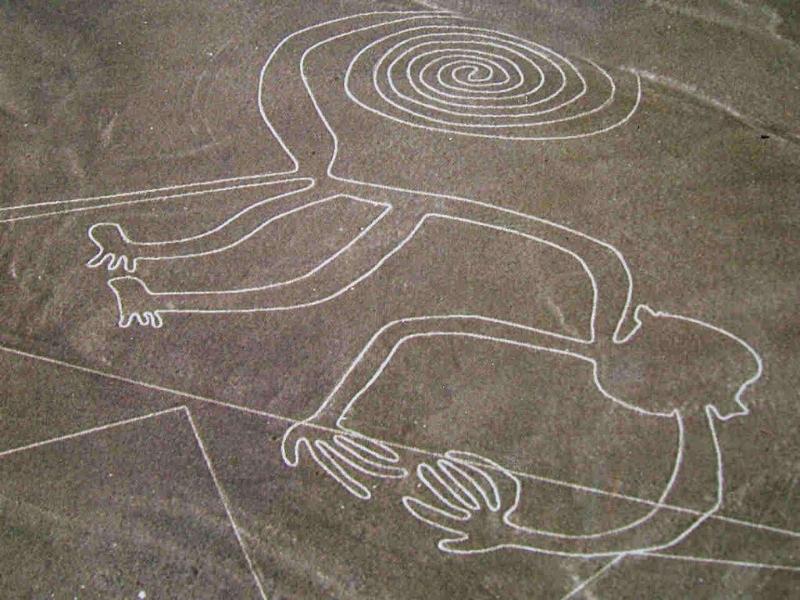
Visit Peru and discover its highlights from Lima to Cusco on an exciting journey that encompasses modern cities and ancient worlds. From the depths of the Colca canyon to the heights of the Andes and on to the unique islands of Lake Titicaca, be immersed in fascinating Peruvian culture while discovering its history buried deep within the walls of lost cities.

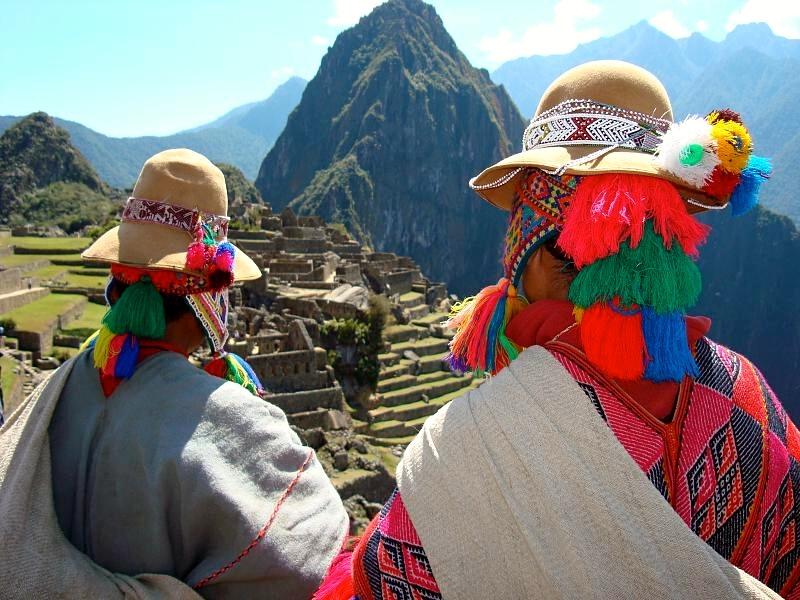
Colours of Peru calls to you with all the allure of the ancient and the mysterious. From the soaring peaks of the Andes to the lush Amazon Rainforest, from the pre-Colombian ruins in the mountains to the Spanish colonial mansions on the coast, 14 Days in Peru offers you exciting adventures and unique experiences.


Your luxury trip to Peru includes a selection of Andean and Amazonian landscapes. We will help you to explore this welcoming and varied country, planning each step of your trip, with the best services. With the help of amazing expert guides, you can enjoy all that Peru has to offer, every detail is well taken care of.

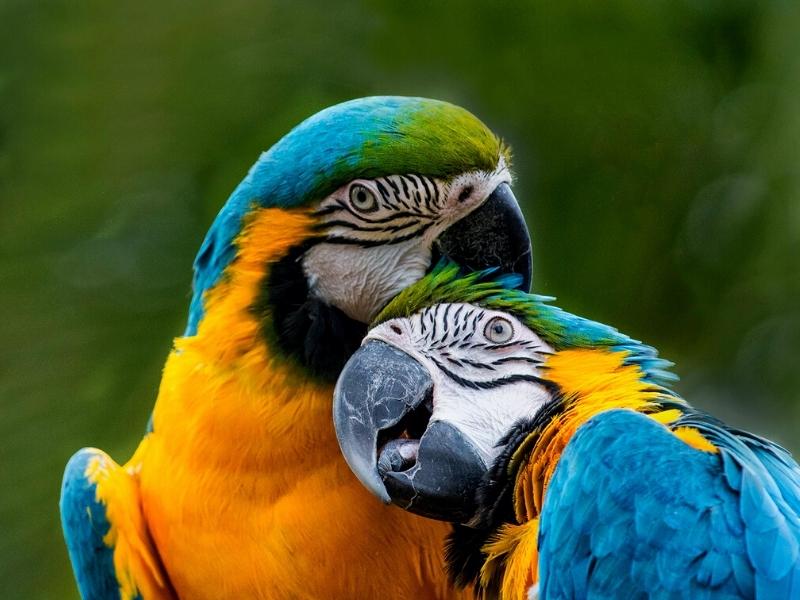
Peru is a country with different cultures and beautiful landscapes. It has one of the best gastronomy in the world. This tour is designed for travelers looking for unique and special moments in their vacations, and families who want to avoid crowds. You will visit the ancient city of Lima, the Amazon forest, the beautiful sacred valley of the Incas, the wonder of Machu Picchu.

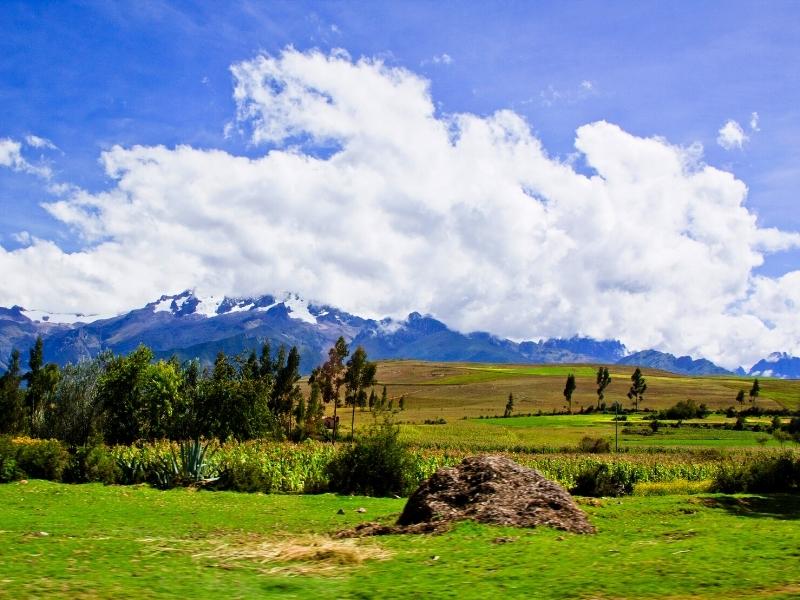
Explore the Sacred valley of the Incas, Visit the best archaeological remains of the Incas in Chinchero, Moray, Ollantaytambo and Pisac. Beautiful landscapes surrounded by snowy peaks and corn fields.
